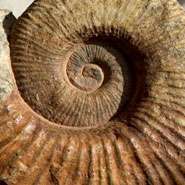Rocks and clocks help unravel the mysteries of ancient Earth

(������ƵOrg.com) -- Research into the dating techniques used to identify the origins of the living world has found the way in which fossils are used to calibrate the Earth’s evolutionary clock is of critical importance. The findings could help us better understand the gaps in the evolutionary timeline.
The study, led by academics at the University of Bristol and published in Biology Letters, analysed how the ‘molecular clock’ and fossil record align to determine how the Earth’s environment and living world have co-evolved.
The genes of living animals serve as timekeepers of the planet’s history and can be used to determine events that happened millions of years ago, from the origin of ancient life forms to the diverge between humans and chimps.
To estimate the pace at which the hands of the ‘molecular clock’ tick, it is necessary to 'calibrate' the clock by referencing the fossil record.
Historically, there have been controversial differences between the times predicted by the molecular clock and the fossil record. This is because the hands of the clock start ticking before novel life forms make their way into the rock record. Furthermore, not everything is recorded - the rarity of animals and plants found in the fossil record further serves to create major gaps in the timeline.
The researchers found the way in which fossils are used to calibrate the molecular clock is of critical importance – a fact that has been frequently disregarded in most molecular clock studies attempting to provide a timeline for life’s history.
It has become commonplace for molecular biologists to second-guess how fossils can be used to calibrate the molecular clock. However, the findings confirm that this strategy can generate misleading scenarios about the origins of the living world.
Rachel Warnock, the lead researcher from the University’s School of Earth Sciences, said: “Without being able to place events of the past on a timeline, it becomes difficult to understand how the planet’s environment and the living world have co-evolved. Ultimately, the past provides a key to understanding the present and the future of the planet.”
The team of researchers from the University of Bristol and University College London adopted a cross-disciplinary approach combining the expertise of both molecular biologists and palaeontologists.
As we are approach five decades since the discovery of the molecular clock the team predict a more promising future for unravelling the past.
Rachel added: “If we want to piece together the crucial environmental events that have shaped the planet, it is vital that biologists and palaeontologists continue working together.
“Our next aim is to stimulate further collaboration between palaeontologists and biologists and continue building our vision of Earth’s mysterious past.
The paper, entitled ‘Exploring uncertainty in the calibration of the molecular clock’ by Rachel C. M. Warnock and Philip C. J. Donoghue from the University of Bristol and Ziheng Yang from University College London, is published today [24 Aug] in Biology Letters.
Provided by University of Bristol

















